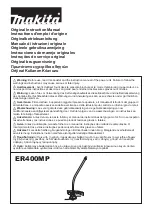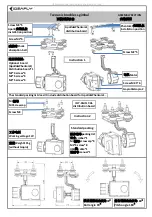
Refrigeration Service Procedures
120
Figure 197: Pressure Rise Graphs
Unit Charging
Initial System Charge
The UT-Series utilizes a receiver tank sight glass.
This is used in order to attain an optimum charge
given varied installations (suction/ liquid line
lengths vary).
NOTE: Before charging the system, make sure
that the refrigerant lines from the gauge
manifold to the refrigerant supply bottle have
been evacuated or purged.
1. Backseat the suction service valve and make
sure the receiver tank outlet valve is still open.
Refrigerant will be added to the high side of
the unit with the unit OFF.
2. Set the refrigerant supply bottle for liquid.
Open the gauge manifold hand valve and add
partial charge of 2.5 kg (5.5 lb.) of R-404A
refrigerant.
NOTE: Do not add more than this.
Remainder of charge will be added through
suction service valve while unit is running.
3. After the liquid refrigerant is added, close the
gauge manifold hand valve.
4. Remove hose from discharge line. A low loss
fitting on this hose will prevent excessive loss
of refrigerant.
5. Back seat (close) the receiver tank outlet
valve.
6. Front seat the suction service valve (SSV).
Run the unit until a 21 to 35 kPa (3 to 5 psi)
reading is obtained on the suction gauge. Stop
the unit. Do not run the unit into a deep
vacuum as it may damage the scroll
compressor.
7. Back seat (close) suction service valve.
8. Remove the evacuation station hoses.
9. Cap service valve ports, backseat (close)
suction service valve (SSV).
Leak
Isolate the pump from the system by closing the
proper valve. Watch the movement of the vacuum
gauge needle. If the needle continues to rise,
this is an indication that a leak exists in the unit
or the connecting line. The leak must then be
located and eliminated.
Moisture
Should the needle show a pressure rise but
finally level off to practically a constant mark,
this is an indication that the system is vacuum
tight but is still too wet, requiring additional
dehydration and pumping time.
Summary of Contents for UT-1200
Page 10: ...Table of Contents 10...
Page 20: ...Safety Precautions 20...
Page 76: ...Operating Instructions for Premium HMI Control Panel 76...
Page 88: ...Electrical Maintenance 88...
Page 98: ...Engine Maintenance 98 Figure 167 Fuel Components...
Page 142: ...Refrigeration Service Procedures 142...
Page 148: ...Clutch Maintenance 148...
Page 150: ...Structural Maintenance 150...
Page 162: ...Wiring and Schematic Diagrams Index 162...
Page 163: ...163 Schematic Diagram Page 1 of 2...
Page 164: ...164 Schematic Diagram Page 2 of 2...
Page 165: ...165 Wiring Diagram Page 1 of 5...
Page 166: ...166 Wiring Diagram Page 2 of 5...
Page 167: ...167 Wiring Diagram Page 3 of 5...
Page 168: ...168 Wiring Diagram Page 4 of 5...
Page 169: ...169 Wiring Diagram Page 5 of 5...
















































